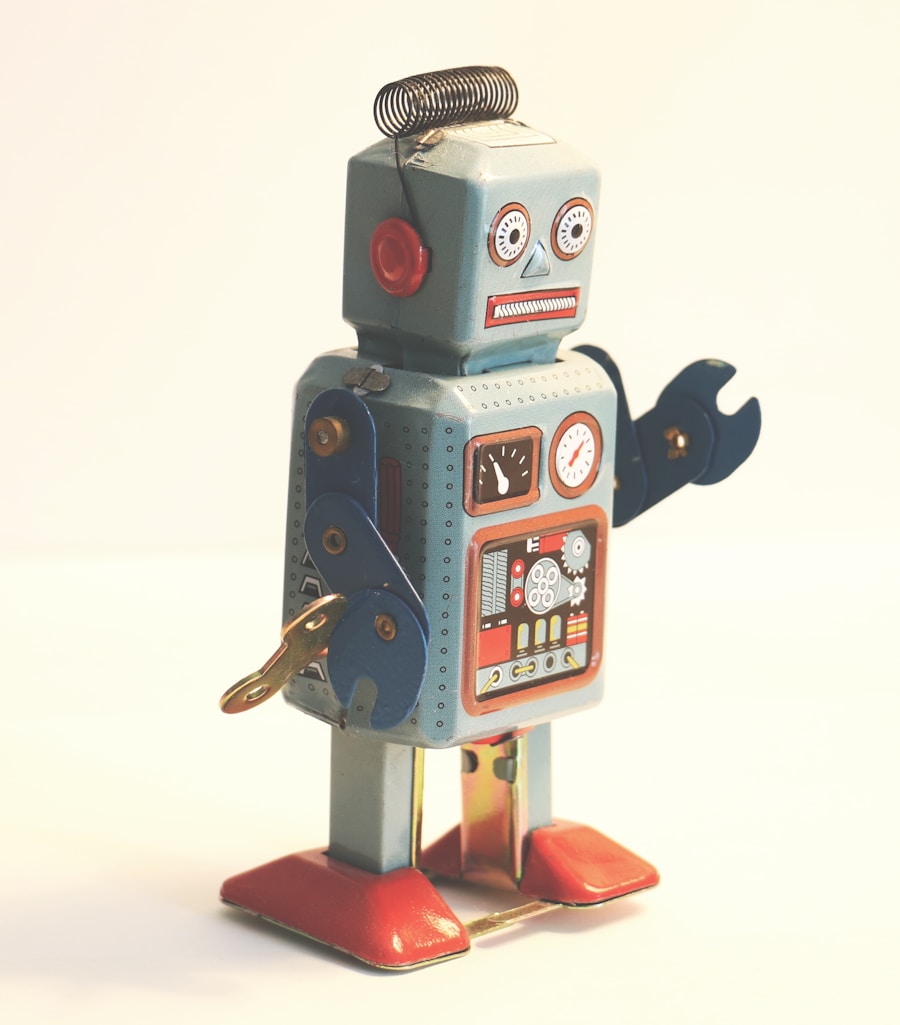In recent years, the proliferation of technology has led to a significant transformation in customer service, with chatbots emerging as a pivotal component of this evolution. Initially conceived as simple automated responders, chatbots have evolved into sophisticated AI-driven tools capable of handling complex customer inquiries. The rise of chatbots can be attributed to several factors, including the increasing demand for 24/7 customer support, the need for businesses to manage high volumes of inquiries efficiently, and the growing consumer preference for instant communication.
As companies strive to enhance customer experience while reducing operational costs, chatbots have become an attractive solution. The integration of chatbots into customer service strategies has been accelerated by advancements in natural language processing (NLP) and machine learning. These technologies enable chatbots to understand and respond to customer queries in a more human-like manner, making interactions smoother and more intuitive.
As a result, businesses across various sectors, from retail to finance, have begun to adopt chatbot technology to streamline their customer service operations. The COVID-19 pandemic further catalyzed this trend, as many organizations sought to maintain customer engagement while minimizing physical interactions. Consequently, chatbots have become a staple in the toolkit of modern customer service.
Key Takeaways
- Chatbots are becoming increasingly popular in customer service, providing 24/7 support and quick responses to customer inquiries.
- Chatbots are changing the customer service landscape by automating routine tasks, reducing response times, and improving overall customer experience.
- Using chatbots for customer service can lead to benefits such as cost savings, improved efficiency, and increased customer satisfaction.
- Implementing chatbots in your customer service strategy requires careful planning, integration with existing systems, and ongoing monitoring and optimization.
- Best practices for using chatbots in customer service include providing clear communication, personalizing interactions, and offering seamless handoffs to human agents when needed.
How Chatbots Are Changing the Customer Service Landscape
Enhanced Efficiency and Personalization
However, chatbots have introduced a new paradigm where automated systems can handle a significant portion of these interactions. This shift not only enhances efficiency but also allows human agents to focus on more complex issues that require emotional intelligence and nuanced understanding. Moreover, chatbots are capable of providing personalized experiences at scale. By leveraging data analytics and machine learning algorithms, they can analyze customer behavior and preferences to tailor responses accordingly.
Personalized Experiences at Scale
For instance, if a customer frequently inquires about a specific product line, the chatbot can proactively offer recommendations or updates related to that line. This level of personalization fosters a deeper connection between the brand and the customer, ultimately leading to increased loyalty and satisfaction.
The Evolving Role of Human Agents
As businesses continue to embrace this technology, the role of human agents is evolving from mere responders to strategic problem solvers who enhance the overall customer experience.
The Benefits of Using Chatbots for Customer Service

The benefits of implementing chatbots in customer service are manifold and extend beyond mere cost savings. One of the most significant advantages is the ability to provide round-the-clock support. Unlike human agents who require breaks and time off, chatbots can operate 24/7 without interruption.
This constant availability ensures that customers can receive assistance whenever they need it, regardless of time zones or business hours. For global companies, this feature is particularly valuable as it allows them to cater to diverse markets without the need for extensive staffing. Additionally, chatbots can handle a high volume of inquiries simultaneously, which is particularly beneficial during peak times or promotional events when customer queries may surge.
This capability not only reduces wait times for customers but also alleviates pressure on human agents who might otherwise be overwhelmed by the influx of requests. Furthermore, chatbots can provide instant responses to frequently asked questions, allowing customers to find solutions quickly without having to navigate through lengthy menus or wait for an agent’s availability. This efficiency contributes to an overall improved customer experience and can lead to higher satisfaction rates.
Implementing Chatbots in Your Customer Service Strategy
| Metrics | Value |
|---|---|
| Customer Satisfaction | 85% |
| First Contact Resolution | 70% |
| Response Time | 30 seconds |
| Cost Savings | 30% |
| Customer Retention | 90% |
Integrating chatbots into a customer service strategy requires careful planning and execution to ensure that they meet both business objectives and customer needs. The first step in this process is identifying the specific use cases for which chatbots will be deployed. Businesses should assess common customer inquiries and pain points to determine where automation can provide the most value.
For example, if a company frequently receives questions about order status or return policies, these areas may be ideal candidates for chatbot implementation. Once the use cases are established, selecting the right technology platform is crucial. There are numerous chatbot solutions available, ranging from simple rule-based systems to advanced AI-driven platforms capable of natural language understanding.
Organizations must evaluate their requirements, budget constraints, and technical capabilities when choosing a solution. Additionally, it is essential to ensure that the chatbot can seamlessly integrate with existing systems such as CRM software or helpdesk platforms to provide a cohesive experience for both customers and agents.
Best Practices for Using Chatbots in Customer Service
To maximize the effectiveness of chatbots in customer service, businesses should adhere to several best practices that enhance user experience and operational efficiency. First and foremost, it is vital to design chatbots with user-friendliness in mind. This includes creating intuitive conversation flows that guide users through their inquiries without causing frustration or confusion.
Utilizing clear language and providing options for users to choose from can significantly improve interaction quality. Another best practice involves continuously monitoring and analyzing chatbot performance. By tracking metrics such as response times, resolution rates, and user satisfaction scores, organizations can identify areas for improvement and make necessary adjustments.
Regularly updating the chatbot’s knowledge base with new information about products or services ensures that it remains relevant and useful over time. Additionally, incorporating feedback mechanisms allows customers to share their experiences with the chatbot, providing valuable insights that can inform future enhancements.
Overcoming Challenges in Using Chatbots for Customer Service

Despite their numerous advantages, implementing chatbots in customer service is not without challenges. One significant hurdle is ensuring that chatbots can effectively handle complex inquiries that may require human intervention. While advancements in AI have improved chatbot capabilities, there are still limitations in understanding context and nuance in conversations.
Businesses must establish clear protocols for escalating issues to human agents when necessary to prevent customer frustration. Another challenge lies in managing customer expectations regarding chatbot interactions. Some customers may have preconceived notions about the limitations of automated systems and may be hesitant to engage with them.
To address this issue, organizations should clearly communicate the capabilities of their chatbots while also providing easy access to human support when needed. Transparency about what customers can expect from their interactions with chatbots can help build trust and encourage more users to embrace this technology.
The Future of Chatbots in Customer Service
As technology continues to advance at a rapid pace, the future of chatbots in customer service looks promising. One potential development is the increased integration of artificial intelligence and machine learning capabilities that will enable chatbots to learn from past interactions and improve over time autonomously. This evolution could lead to even more personalized experiences for customers as chatbots become better equipped to anticipate needs based on historical data.
Moreover, the rise of voice-activated assistants presents an opportunity for chatbots to expand beyond text-based interactions into voice-based communication. As consumers become more accustomed to using voice commands through devices like smartphones and smart speakers, businesses may need to adapt their chatbot strategies accordingly. This shift could lead to more natural conversations between customers and chatbots, further blurring the lines between human and machine interactions in customer service.
Success Stories of Companies Revolutionizing Customer Service with Chatbots
Several companies have successfully harnessed the power of chatbots to revolutionize their customer service operations, setting benchmarks for others in the industry. For instance, Sephora has implemented a chatbot on its website and mobile app that assists customers with product recommendations based on their preferences and previous purchases. This personalized approach not only enhances the shopping experience but also drives sales by guiding customers toward products they are likely to enjoy.
Another notable example is H&M’s chatbot, which helps customers find clothing items based on their style preferences and current trends. By engaging users in a conversational manner and providing tailored suggestions, H&M has successfully integrated chatbot technology into its customer service strategy while maintaining a focus on personalization and user engagement. These success stories illustrate how companies can leverage chatbots not just as tools for efficiency but as integral components of their overall customer experience strategy.
By embracing innovation and prioritizing user satisfaction, businesses can position themselves at the forefront of the evolving landscape of customer service.












Leave a Reply